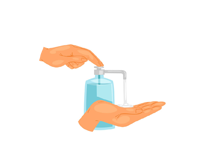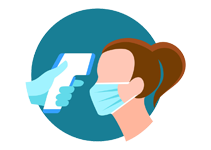Thiacetazone
Uses of Thiacetazone
- Treatment of tuberculosis (TB)
- Used in combination therapy with other TB drugs
How Thiacetazone Works
Thiacetazone works by interfering with the synthesis of essential components in the cell wall of Mycobacterium tuberculosis, thereby stopping the bacteria from growing and multiplying.
Benefits of Thiacetazone
- Helps in the treatment of TB when used with other drugs
- Cost-effective in resource-limited settings
- Active against Mycobacterium tuberculosis
How to Take Thiacetazone
Thiacetazone should be taken exactly as prescribed by your doctor, usually in combination with other anti-TB medications. It is taken orally with or without food. Do not skip doses and complete the full course even if you feel better.
Type of Dosage Available
- Oral tablets
- Combination tablets (with isoniazid or other TB drugs)
Side Effects of Thiacetazone
- Skin rashes
- Allergic reactions
- Nausea and vomiting
- Loss of appetite
- Severe skin reactions like Stevens-Johnson syndrome (rare but serious)
Safety Advice
- Inform your doctor about any allergies
- Not recommended for HIV-positive patients due to risk of severe skin reactions
- Use only under medical supervision
- Report any signs of rash or allergic reaction immediately
Frequently Asked Questions (FAQs)
Q: What is Thiacetazone used for?
A: Thiacetazone is used to treat tuberculosis, typically in combination with other anti-TB medications.
Q: How should Thiacetazone be taken?
A: It should be taken orally as prescribed by your doctor, usually along with other TB drugs.
Q: What are the common side effects of Thiacetazone?
A: Side effects may include skin rash, nausea, vomiting, and allergic reactions.
Q: Is Thiacetazone safe for people with HIV?
A: It is not recommended for HIV-positive individuals due to the risk of severe skin reactions.
Q: Can I stop taking Thiacetazone if I feel better?
A: No, complete the full course as prescribed to ensure effective treatment of TB.
Medicine Not Available for Thiacetazone
Uses of Thiacetazone
- Treatment of tuberculosis (TB)
- Used in combination therapy with other TB drugs
How Thiacetazone Works
Thiacetazone works by interfering with the synthesis of essential components in the cell wall of Mycobacterium tuberculosis, thereby stopping the bacteria from growing and multiplying.
Benefits of Thiacetazone
- Helps in the treatment of TB when used with other drugs
- Cost-effective in resource-limited settings
- Active against Mycobacterium tuberculosis
How to Take Thiacetazone
Thiacetazone should be taken exactly as prescribed by your doctor, usually in combination with other anti-TB medications. It is taken orally with or without food. Do not skip doses and complete the full course even if you feel better.
Type of Dosage Available
- Oral tablets
- Combination tablets (with isoniazid or other TB drugs)
Side Effects of Thiacetazone
- Skin rashes
- Allergic reactions
- Nausea and vomiting
- Loss of appetite
- Severe skin reactions like Stevens-Johnson syndrome (rare but serious)
Safety Advice
- Inform your doctor about any allergies
- Not recommended for HIV-positive patients due to risk of severe skin reactions
- Use only under medical supervision
- Report any signs of rash or allergic reaction immediately
Frequently Asked Questions (FAQs)
Q: What is Thiacetazone used for?
A: Thiacetazone is used to treat tuberculosis, typically in combination with other anti-TB medications.
Q: How should Thiacetazone be taken?
A: It should be taken orally as prescribed by your doctor, usually along with other TB drugs.
Q: What are the common side effects of Thiacetazone?
A: Side effects may include skin rash, nausea, vomiting, and allergic reactions.
Q: Is Thiacetazone safe for people with HIV?
A: It is not recommended for HIV-positive individuals due to the risk of severe skin reactions.
Q: Can I stop taking Thiacetazone if I feel better?
A: No, complete the full course as prescribed to ensure effective treatment of TB.
Download India's most affordable pharmacy app
- Compare with medicine prices
- Save upto 90% on your medicine bills

Temperature Controlled storage and delivery

Regular Sanitization

Disinfected Packaging









 Added!
Added!